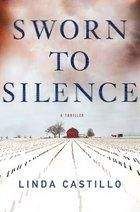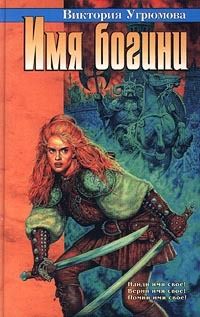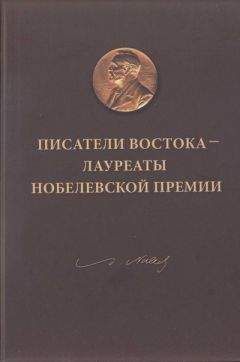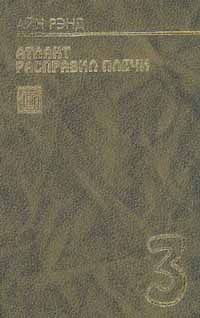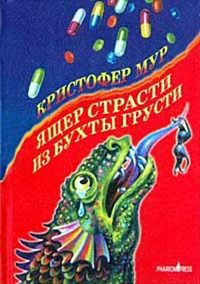That need drives me forward when the doctor motions to a small alcove. “Grab a gown and shoe covers on the shelf there,” he says. “I’ll take your coat.”
Reluctantly, I relinquish my parka. He hangs it on a hook outside the door. Quickly, I don a sterile gown, slip the disposable shoe covers over my boots and leave the alcove.
Doc Coblentz motions toward the adjoining room labeled with a larger biohazard sign. “It’s not pretty,” he says.
“Murder never is.”
We go through another set of swinging doors and enter the autopsy room. Though it’s equipped with a separate ventilation system from the rest of the building, I discern the smell of formalin and an array of other, darker odors I don’t want to identify. Four stainless steel gurneys are parked against the far wall. A huge scale used for weighing bodies stands in the center. A smaller scale used for weighing individual organs squats on the stainless steel counter along with an assortment of trays, bottles and instruments.
The doc snags a clipboard from a shelf and takes me to the fifth gurney, the only one in use. He pulls down the sheet and Amanda Horner’s face comes into view. Her skin is gray now. Someone closed her eyes, but the left lid has come back up. A sticky-looking film coats the eyeball.
Sighing, Doc Coblentz shakes his head. “This poor child endured a horrible death, Kate.”
“Torture?”
“Yes.”
I steel myself against a slow rise of outrage. “Do you know the cause of death?”
“Exsanguination more than likely.”
“Any idea what kind of knife he used?”
“Something damn sharp. No serration. Probably short-bladed.” Using a long wooden swab with a cotton tip, he indicates the cut on her neck. “This is the fatal wound. Sharp force injury is clearly visible. You can see that the wound path is relatively short.” He glances at the clipboard. “Eight point one centimeters.”
“Is that significant?”
“It tells me he knew where to cut to hit the artery.”
“Medical training?”
“Or maybe he’s done it before.”
Because I don’t want to address that, I go to my next question. “How did he initially subdue her? Drugs? What?”
“I’ll run a tox screen.” He looks at me over the tops of his glasses. “But I think he may have used a stun gun.”
“How can you tell?”
Slipping his chubby hands into disposable gloves, he tugs the sheet down to her abdomen.
I’ve been a cop for almost ten years. I’ve seen shootings. Bloody domestic disputes. Horrific traffic accidents. It still disturbs me to see the dead up close and personal. Fear of death is a primal response built into all of us to varying degrees. No matter how much I’ve seen, I’ll never get used to it.
“See these red marks?” he asks.
My eyes follow the swab. Sure enough, two small round abrasion-like dots mar the skin at her left shoulder. Two more appear on her chest, above her right breast. Another stands out on her left bicep. If I wasn’t looking at the body of a murder victim, I could almost convince myself I was looking at a cluster of chicken pox, or some other benign blemish. But as a cop I know these marks are much more sinister.
“Abrasions?” I look closer. “Burns?”
“Burns.”
“Most stun guns don’t leave marks.”
“You’re right,” he concedes. “That’s particularly true if it’s applied through clothing.”
“So he hit her with it when she was nude?”
He lifts his shoulders. “Probably. But these marks are not consistent with what I’ve seen in the past.”
“What are you getting at?”
“These burns are more substantial. I think the voltage or amperage of the stun gun was tampered with.”
I look at the marks and try not to shudder. Ten years ago I attended the police academy in Columbus. As part of our training, any cadet brave enough to volunteer was hit with a stun gun. Because I was curious, I volunteered. Even though the amperage was set low, it knocked me on my ass. It incapacitated me for a full minute. And it hurt like hell. I couldn’t imagine being at the mercy of some psychopath with a souped-up stunner.
“You think the stun gun is some kind of homemade job?” I ask.
“Or modified.” He nods. “Whatever the case, she was hit with it multiple times.”
I look at the scored flesh on her wrists. A quiver runs through my stomach when I see the white of bone. “What the hell did he bind her with?”
“Some type of wire. For quite some time, evidently.” He shakes his head so vigorously his jowls jiggle. “She struggled.”
Painters Mill is located in the heart of farm country. Many farmers grow and cut hay, so there’s plenty of baling wire around. Even if we identified the type, it would be impossible to trace.
The doctor lifts the sheet. “He used some type of chain on her ankles. Large links with some rust present. Judging from these bruises, he strung her up when she was still alive.”
The image my mind conjures is too horrific to contemplate. All I can think is that we’re not dealing with a human being. We’re not even dealing with an animal. Only true evil could inflict these kinds of horrors.
With the impersonal enthusiasm of the scientist he is, the doc removes the sheet completely. I mentally brace as Amanda Horner’s body comes into view. I see multiple burns and abrasions on gray flesh. I’m not squeamish, but my stomach feels jittery. I’m aware of my heart beating too fast. Saliva pooling in my mouth. I know what the doc is going to say next, and my eyes are drawn to the carving on her abdomen, above her navel.
The wound has been cleaned. The XXIII carved into her flesh is unmistakable. Realizing I’m holding my breath, I exhale.
“You need water, Kate?”
The question annoys me, but I resist the urge to snap. “Did you get photos?”
“Yes.”
My eyes go to the faint bruising on the insides of her thighs. “She was sexually assaulted?”
“There was minute vaginal tearing. Some anal tearing as well. I also found evidence of burns around the anus, probably from some type of electrical charge. I took swabs, but I don’t think there was any semen left behind.”
“What about hair or fibers?”
“No and no.”
“So he wore a condom.”
“A lubricated condom, actually. I found traces of glycerin and methylparaben inside her vagina and around the anus.”
I consider that. “How can a guy get close enough to rape and not leave hair behind?”
“I have two hypotheses on that.”
“Lay them on me.”
“He could have shaved his body hair. Wouldn’t be the first time a serial rapist has gone to those lengths to avoid the risk of leaving DNA behind.”
“And the second?”
“He could have raped her using some type of foreign object. I may know more when I get my swabs back from the lab.”
“So, our guy might know something about forensics and evidence.”
“Who doesn’t these days?” He shrugs. “People watch CSI. Everyone’s an expert.”
“Put a rush on the lab, will you?”
“You bet I will.”
Some of the tension leaves me when the doc drapes the sheet over the body. “What about time of death?”
“I took a core body temp as soon as I got her here, which was at three-fifty-three this morning.” The doc looks at the clipboard. “Liver temp was 83.6 degrees Fahrenheit. My best estimate on time of death is going to be between four and seven P.M. yesterday afternoon.”
Belinda Horner told me the last time she saw Amanda was around seven-thirty P.M. Saturday, so she was abducted at some point after that. “If he abducted her sometime Saturday night, he had her for quite a while before he killed her.” The thought sickens me. Makes me want to get my hands on the sick bastard responsible and forget I’m a cop.
“I’m afraid so.” He gestures toward the body. “Whoever did this took his time with her, Kate. He wasn’t in a hurry and kept her alive for a while.”
I try to keep my voice level. “So, he probably took her to a place where he felt safe. A place where he knew he wouldn’t be overheard.” There are a lot of places like that in farm country, where houses are often more than a mile apart.
I look at the doc. “Was she gagged?”
“Not that I can tell. No sign of tape residue. No visible fibers in her mouth.” He grimaces. “She bit her tongue.”
He listened to her scream, I think. “So he has a place that’s private. A place he can come and go as he pleases. A place that’s desolate where no one could hear her.”
“Or a house with a basement or soundproof room.”
The need to move, to work this case, pumps through me with an intensity that’s almost manic. My mind whirls with all the things I need to do. The people I need to question. I must decide which tasks to delegate and which to take on myself. I’m going to need the help of all my officers. I’ll need to call in my auxiliary officer, too. My exhaustion from earlier is gone. In its place is the steel resolve to find a monster.
As if realizing I’m finished here, the doctor snaps off his latex gloves. “I’ll call you as soon as I finish.”
“Thanks, Doc. You’ve been a huge help.”
I’m midway to the door when I remember I have one more question. “Do you have the complete autopsy reports on the vics from before? I’ve only got the summaries.”
“I believe they’re in archive, but I can get them.”
“I’d appreciate it if you’d pull everything you have and send copies to my office ASAP.”
He holds my gaze, and his expression darkens. “I was just out of my residency back then, Kate. I assisted Dr. Kours on all four autopsies.” He laughs, but it’s a humorless sound. “I swear to God I almost went into dentistry after seeing those bodies.”
I don’t want to hear what he’s going to say next, but I don’t turn away.
“You see something like that and it sticks with you.” He crosses to me. “Amanda Horner died exactly the same way as those girls.”
Though I’d anticipated this moment, his words send a chill through me.
“I’m sure you noticed that the number carved into the victim’s abdomen jumps from nine to twenty-three,” the doctor says. “That concerns me.”
“We’re not even sure if we’re dealing with the same killer,” I reply. “Could be a copycat.”
He tosses his gloves into the biohazard receptacle. “I don’t want to believe there is one man, let alone two, who are capable of this kind of evil. I sure as hell don’t want to believe they sprang from this town.”
He removes his glasses and wipes the bridge of his nose with a handkerchief, and I realize this veteran doctor is upset by the things he’s seen today.
“It’s his signature,” he says. “I’ll stake my career on it.”
I stare at him, telling myself he’s wrong. But for the first time, a tiny grain of doubt assails me. Some little voice in the back of my mind demands to know if, in the hysteria and horror of that dreadful day sixteen years ago, the shotgun blast failed to do the job.
For half of my life I’ve believed I took a man’s life. I’ve forgiven myself and asked God to do the same. I rationalized my actions, my silence, the silence of my family. Somehow, I learned to live with it. This murder makes me question all of it.
“Kate?” The doc’s bushy white brows knit in concern.
“I’m okay,” I say quickly and start toward the door. I feel the doctor’s eyes on me as I yank it open. By the time I step into the hall I’m sweating beneath my uniform.
There’s only one way to find out if the man I shot all those years ago is dead. To do that I need to talk to two people I’ve spoken to only a handful of times since. Two people who were there the day my life was irrevocably changed by violence. The day a fourteen-year-old Amish girl picked up her father’s shotgun and killed a man.
Or did I?
CHAPTER 5
I sit in the Explorer in the hospital parking lot for five minutes before I’m able to function. My hands are still shaking when I hit the speed dial for dispatch. Mona picks up on the first ring.
“I want you to compile a list of abandoned homes, properties and businesses in and around Painters Mill,” I say without preamble. “Say within a fifty-mile radius.”
“Anything in particular you’re looking for?”
“Just make the list. I’ll fill you in on the details when I get back to the station.” Putting the SUV in gear, I head for the highway and try not to think too hard about what I have to do next.
My brother, Jacob, his wife, Irene, and my two nephews, Elam and James, live on a sixty-five-acre farm on a dirt road nine miles east of town. The place has been in the Burkholder family for eighty years. In keeping with the Amish tradition, Jacob, the eldest and only male child in our family, inherited the farm when my mother passed away two years ago.
At the mouth of the gravel lane, I jam the Explorer into four-wheel drive and muscle the vehicle through foot-deep snow, praying I don’t get stuck. The familiarity of the farm strikes me as I barrel closer at a too-fast clip. A small apple orchard lies to my right. The bare-branched trees seem to glare at me in stern judgment from their white winter blanket.
I’m an outsider here, a foreigner trespassing on sacred ground. That fact has never been more evident as I enter the world of my past. I’m a stranger to the people I once knew intimately. I rarely visit. I barely know my two young nephews. It hurts knowing they’ll grow up and never know me. As much as I want to make things right, some chasms are simply too treacherous to traverse.
To my left, six milk cows huddle around a feeder mounded with snowcrusted hay. Ahead, the lane veers right where ruler-straight rows of cut corn usher my eyes to the farmhouse beyond. It makes for a pretty picture in the snow, and for a brief moment I’m reminded of a simpler time. A time when my sister and brother and I ran barefoot and carefree through wheat fields and played hide-and-seek among tall rows of corn. I recall winter days filled with hours of ice hockey with our cousins on Miller’s pond. I remember a time when our only responsibilities were milking the cows and goats, feeding the chickens, helping Mamm snap beans and, of course, worship.
That childhood bliss ended abruptly in the summer of my fourteenth year. The day a man by the name of Daniel Lapp came to our house with murder on his mind. I lost my innocence that day. I lost my ability to trust. My capacity to forgive. My faith in both God and family. I nearly lost my life, and in the weeks following many times I wished I had.
I haven’t been here since Mamm’s funeral two years ago. Most Amish probably think avoiding my siblings the way I do is shameful. But I have my reasons.
